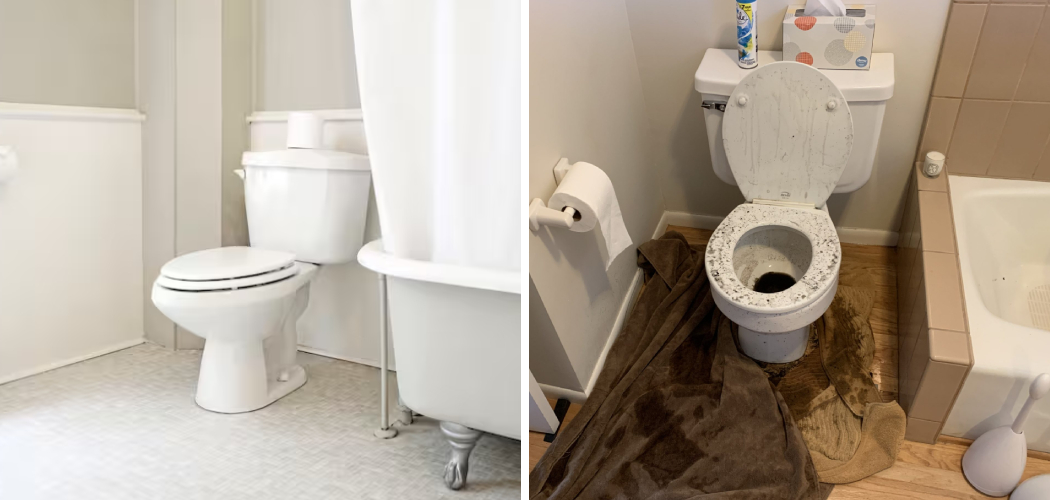Are you dealing with a messy bathroom situation? Whether it’s an overflowing toilet, or just water on the floor, cleaning up after an overflow can be a daunting task. Fortunately, there are steps that you can take to get your bathroom back into shape quickly and easily.
Here, we’ll walk through how to clean up overflowed toilet water so that you don’t have to live in fear of further damage happening to your home each time you flush. Keep reading for some tips on containing the water and making sure it doesn’t become a bigger problem!
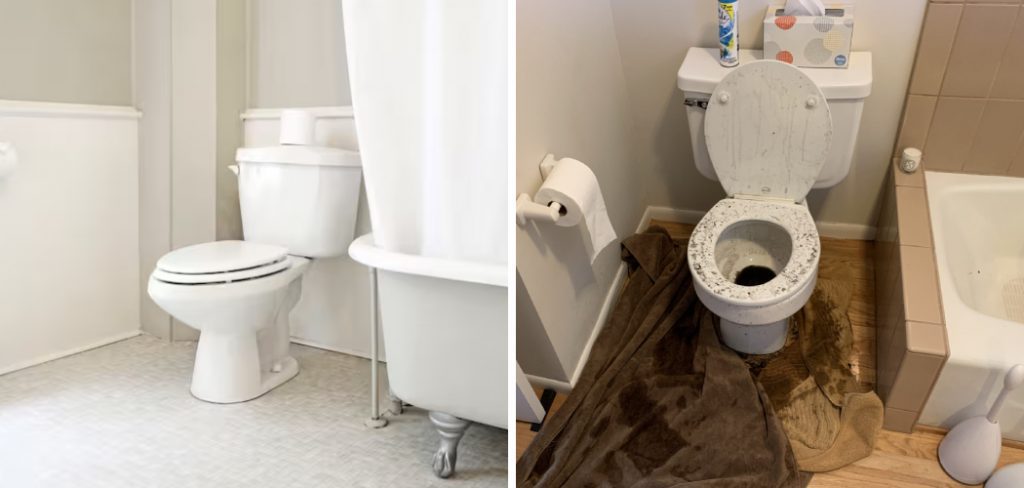
An overflowed toilet can be both unpleasant and costly to fix. Cleaning up this mess isn’t easy, so in this blog post, we’ll discuss how exactly to clean up an overflowing toilet as quickly and efficiently as possible.
From determining the cause of the overflow to using proper hygiene practices for cleaning it up – by following these steps, you’ll have your bathroom back in action quickly and without much hassle!
Why is It Important to Clean Up Overflowed Toilet Water?
1. To Avoid Health Hazards
Overflowed toilet water is considered a biohazard, as it may contain bacteria and viruses. If the water has come into contact with feces or urine, the risk of contamination is even higher. Inhaling or coming into contact with contaminated water can lead to serious illnesses, including E.coli, salmonella, and hepatitis.
2. To Prevent Water Damage
If left unattended, overflowed toilet water can cause damage to other areas of the home and may lead to mold growth and wood rot. It’s important to clean up the area as soon as possible in order to prevent further damage.
3. To Maintain Sanitary Conditions
Not only is it important to clean up overflowed toilet water in order to protect your health, but also to maintain a sanitary living environment. Cleaning the area thoroughly will help reduce odors and keep your home feeling clean and fresh.
Taking swift action when it comes to cleaning up overflowing toilet water can save you from serious illness and property damage. By following these steps, you can help ensure that your home remains a safe and sanitary environment.
How to Clean Up Overflowed Toilet Water in 5 Easy Steps
Step 1: Gather All The Materials
The very first step is to gather all the necessary materials for cleanup. You will need a mop, bucket, gloves, face mask, and cleaning supplies of your choice. Also, you have to make sure that all the electrical appliances near the area are switched off to prevent any kind of electric shock.
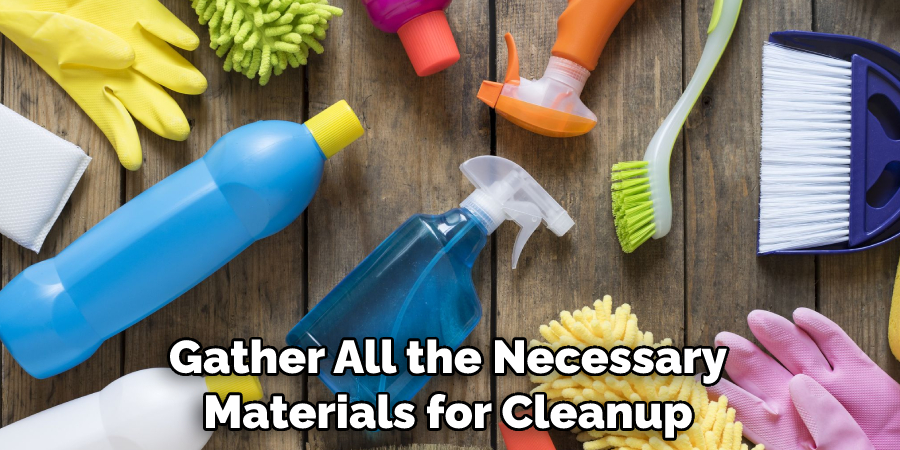
Step 2: Turn Off The Water Supply
The next step is to turn off the water supply of the toilet by operating the shutoff valve located behind it. This will help in stopping the water from overflowing and make it easier for you to clean up the mess.
Step 3: Start Cleaning The Area
Once you have gathered all the materials and switched off the water supply, you can start cleaning up the area. Begin by mopping up any standing water and then scrubbing down the floor with a disinfectant cleaner to kill any germs or bacteria present in it. Make sure to wear gloves while cleaning to keep yourself safe from any germs or chemicals present.
Step 4: Dispose of The Used Materials
Once you are done with the cleaning process, it’s time to dispose of all the used materials. Make sure that all the used gloves and other disposable items are thrown in a sealed bag and disposed of properly.
Step 5: Monitor The Toilet For Further Overflow
The last step is to monitor the toilet for any further overflow. After you have cleaned up the mess and disposed of all the used materials, keep an eye on the toilet for a few hours and check if there is any water leaking out from it or not. If there is, call a professional plumber immediately to prevent any further damage.
With these easy steps, you can quickly and effectively clean up an overflowed toilet without much hassle or worry. Make sure you follow all the safety precautions while cleaning up the mess to prevent any kind of injury or infection. With proper care and maintenance, your toilet should be back in working order in no time. Good luck!
Some Additional Tips to Clean Up Overflowed Toilet Water
1. Do Not Use Electrical Appliances or Vacuum Cleaners in the House
Never attempt to use any electrical appliances or vacuum cleaners while there is standing water inside the house. This can cause serious electric shock and injury if not done with caution. Also, you have to make sure that the power sockets and switches are off.
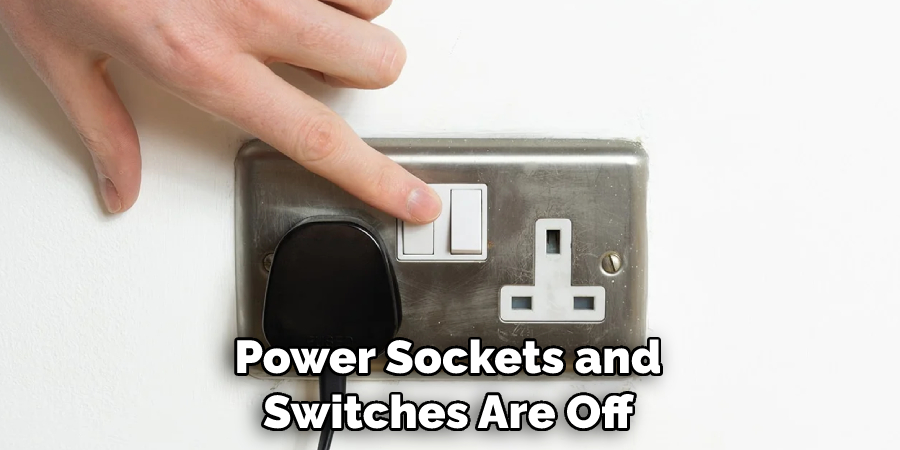
2. Wear Protective Clothing When Cleaning Up
If you are going to clean up the mess, it is important that you wear protective clothing like rubber gloves, boots, and an apron or overalls to protect yourself from germs and bacteria. It is also advisable to use a face mask to avoid coming in contact with any harmful fumes.
3. Use Hot Water and Detergent for Disinfection
Once you have cleared the mess, use hot water and detergent to disinfect the area as well as to prevent any odors or stains from forming. Make sure that you scrub all surfaces thoroughly before drying them off.
4. Use a Household Disinfectant
It is essential to use a household disinfectant to prevent any harmful bacteria from growing on the surfaces. Make sure that the solution you are using is safe for use in your home and follow the instructions carefully.
5. Replace Any Damaged Parts
If there were any parts of your toilet or plumbing system that got damaged due to the overflow, you must replace them before use. This will ensure that your toilet works properly and efficiently in the future.
By following these tips, you should be able to easily clean up any overflowed toilet water without much trouble or danger. Remember to take all necessary safety measures while doing so and make sure that the area is cleaned thoroughly before using it again. Doing this will help you keep your home safe and prevent any further accidents in the future.
Frequently Asked Questions
What Precautions Should I Take When Handling Toilet Water?
When handling toilet water, it is important to take precautions against possible contamination. Wear protective gear such as gloves and a face mask to minimize skin contact with the contaminated water and any sewage particles that might be present.

Dispose of all materials in a sealed plastic bag in an outside container. Make sure to use bleach or disinfectant on any areas that have come into contact with the water, and wash your hands thoroughly afterward.
What Can I Use to Clean Up Toilet Water?
The most effective way to clean up toilet water is with a wet/dry vacuum cleaner. This type of vacuum will help you quickly absorb the excess water without having to use a mop or cloth.
It is important to take precautions when using the vacuum cleaner, such as wearing protective gear and making sure it is properly connected and sealed before turning on. Once you have successfully removed the water, it is important to use a disinfectant product to clean the area thoroughly.
What If Toilet Water Has Soaked Into The Floor?
If toilet water has soaked into the floor, it is important to act quickly. Start by soaking up as much of the excess water as possible with a wet/dry vacuum or mop. Then use absorbent materials such as rags or paper towels to soak up any remaining moisture. Once you have removed all the moisture, apply a disinfectant product to the area and allow it to dry completely.
Finally, use a fan or dehumidifier to help speed up the drying process. It is important to clean any affected areas as soon as possible in order to prevent the spread of germs and bacteria.
What Should I Do If My Toilet Overflows Again?
If your toilet overflows again, it is important to act quickly and take the necessary steps to clean up the mess. Start by shutting off the water supply valve and flushing the toilet several times to help remove any remaining debris or residue.
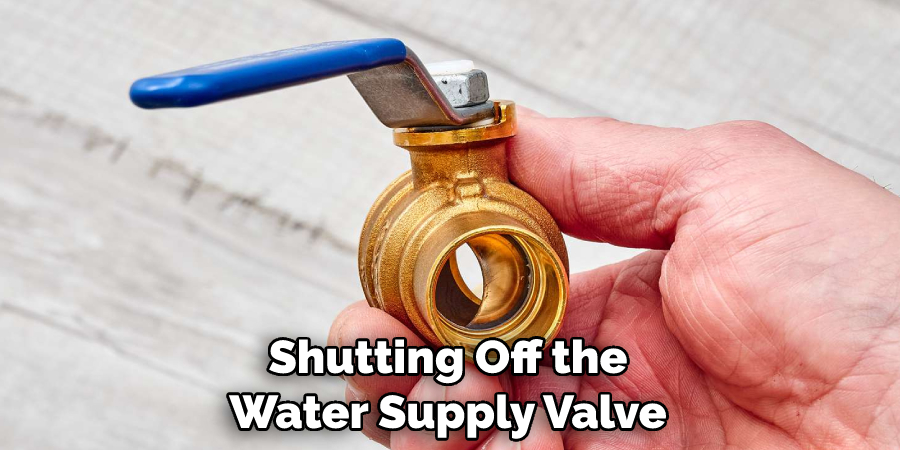
Conclusion
Now you know how to clean up overflowed toilet water! Overall, properly cleaning up after an overflowed toilet is a key step in protecting your family from potential health risks. Thus, knowing how to effectively clean up the water and sanitize the area is an important part of keeping yourself and your family safe.
Remember, it’s important to act quickly as soon as you notice the overflow to limit the amount of damage to flooring, walls, and other materials. If you don’t feel comfortable or capable of tackling this task on your own, consider calling a professional plumber for assistance with ensuring that the job is done correctly and safely.
Indeed, a little knowledge can go a long way when it comes to caring for your home – especially when dealing with messes like this one!

